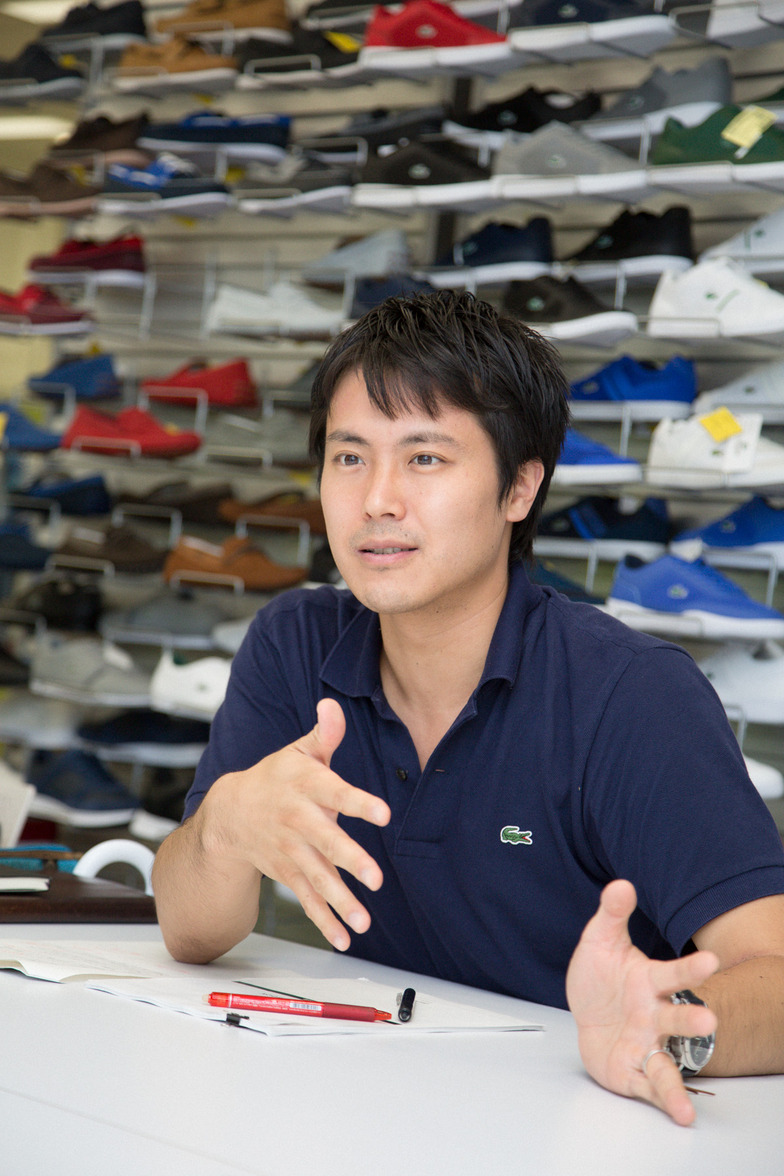From late May to early June this year, Lacoste's crocodile mascot took center stage in the Shibuya and Aoyama areas, transforming itself into a walking shop and drawing significant attention. Regarding this campaign, Lacoste Japan's Sahoko Takeuchi interviewed Soichi Ono and Takuya Fujita from Dentsu Inc., who handled the planning and event production.
Interview & Editing: Aki Kanahara, Dentsu Inc. Event & Space Design Bureau
Creating Lacoste-Style "Playfulness"
Ono: Initially, it was a competitive pitch to select a media agency. We presented a comprehensive strategy: what was optimal for Lacoste, what expression was appropriate at that time, and therefore, what kind of media plan would be best.
The core messages were "Focus branding on young people" and "Move beyond simple, conservative sportswear to propose playful styling to the world." Why did you choose our planning?
Takeuchi: There were three reasons. First, it was interesting that you didn't just deliver a media plan when asked for one—you went beyond the brief. Second, your proposal wasn't just about media buying; it was backed by solid logic and consumer insights.
Third, while our brand has name recognition, surprisingly few people have a clear brand image beyond "What is Lacoste?" We felt enhancing customer engagement was crucial, so we appreciated how the consumer insight keyword "playfulness" was clearly integrated into your concept.
Ono: Within the global DNA you promote, there's a concept closely aligned with playfulness: inventive and creative. This time, the "I'm SHOP" initiative, where crocodile models become shops selling their own coordinated outfits in the city, embodies the idea of pairing polo shirts with something else – it's a proposal inviting customers to express their own sense of playfulness.
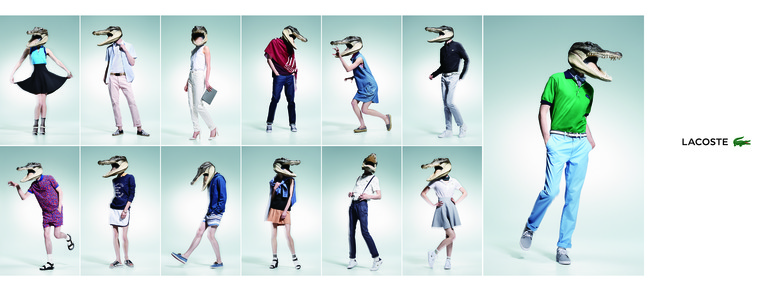
Alligator models dressed in 20 different outfits appeared in Omotesando.
Takeuchi: When communicating styling, even through magazine editorial tie-ins, it often doesn't really resonate.
Ono: It really needs something newsworthy or a hook to get the message across. It's about how to shift the context of fashion. We also invested heavily in creating the crocodile masks to achieve a truly realistic quality.
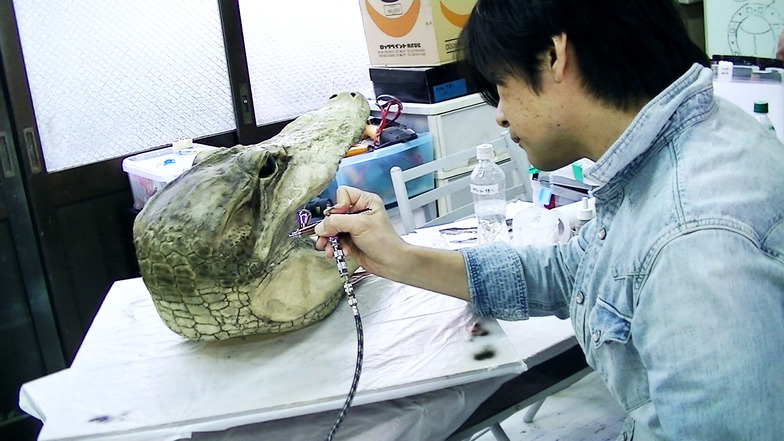
Behind the scenes of the crocodile mask production
Fujita: I think within the brand Lacoste has built, there was already fertile ground for acceptance. It felt like this playful spirit could only truly resonate because it's Lacoste.
Takeuchi: That's right. Since it's a brand that started with sports, there's this attitude or concept around movement, positivity, optimism—that French "Joie de vivre," celebrating life joyfully and proactively. It's hard to pin down, but that brand attitude is there.
Ono: Creating a site where the crocodile model sells products wasn't just advertising; it was closer to sales—literally, "press the button to buy." It was about pushing that playful spirit to the limit. They transformed the e-commerce site itself into something playful alongside us. Merchandising and advertising often operate in silos, making it hard to integrate everything, but this time we made it happen.
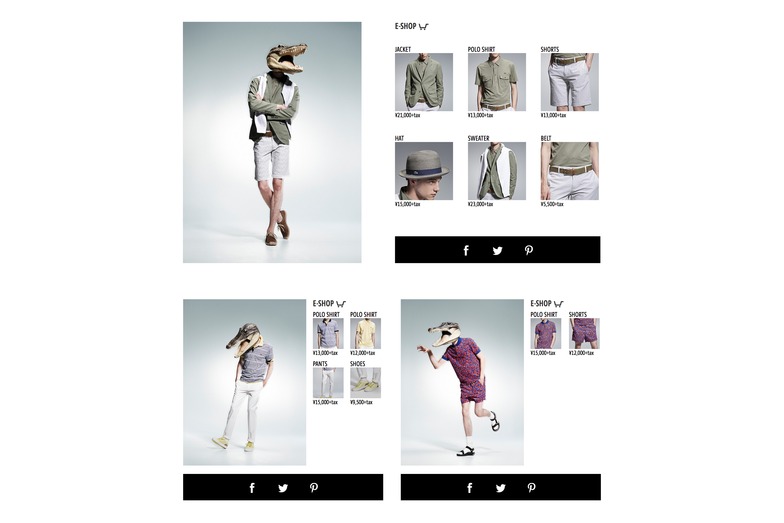
E-commerce Site Development
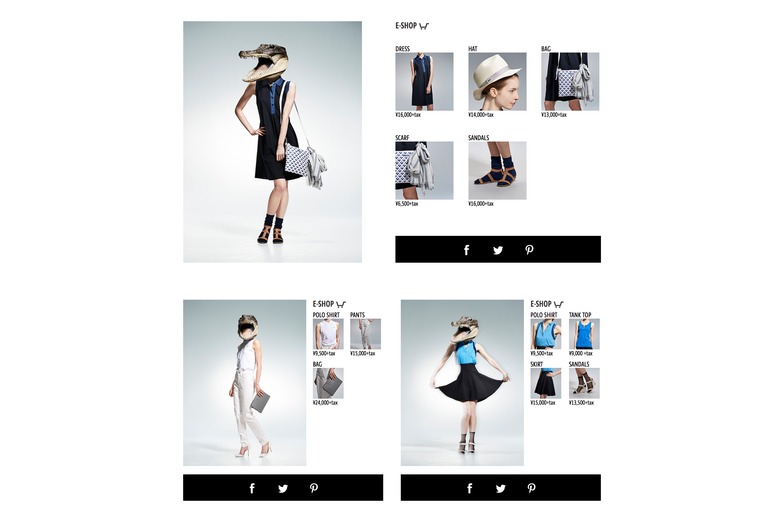
How to evolve the DNA Lacoste already possesses
Ono: What assets have you gained, or what learnings stand out? For example, fashion snap articles getting retweeted 1,000 or 2,000 times, spreading information. That feels like it reached a broader audience than simply spreading info like "Lacoste released this product" or "We're holding this event."
Takeuchi: We don't expect consumers' perception of the brand to change overnight. However, we conduct annual brand health checks to evaluate how much affinity and interest in the brand has increased, and whether people who knew the Lacoste name but didn't feel it was for them now unexpectedly feel it's more relatable.
Ono: I believe striking the right balance between tradition and evolution is crucial for the Lacoste brand. How do we best communicate its French heritage and inherent innovation to the world today?
Takeuchi: We absolutely must target the younger generation, those in their teens and twenties, going forward. It's essential to become a brand that generates buzz among them. In that sense, I believe the initiatives we took this time provide the answer.
Fujita: What fashion brands do as fashion brands can sometimes be the furthest thing from the kind of content that goes viral online among teens and twenties. Enjoying things with a bit of edginess, that kind of flavor, is really key.
Takeuchi: If you want to give customers that thrilling sense of anticipation—like someone with a solid brand DNA doing something interesting every year—I think you probably need to supplement that with media mix strategies. If only the playful aspects stand out, the element of surprise gets lost, right? I think we need to work on clearer demarcation between different media going forward.
Ono: I agree. Discussions about unifying brand personality and maintaining consistency have been ongoing for the past decade. But just as people have duality, brands inherently have two sides too. Even a highly prestigious brand can be seen enjoying playful moments while upholding its dignity. It's only when both sides are visible that the brand becomes truly interesting.
Fujita: Car manufacturers and others are starting to pivot toward local adaptation lately. Showing this duality or multifaceted nature is what broadens a brand's scope. Maybe it's because globalization has brought the world closer together, but I feel brands can now pull off this dual or multifaceted approach – appealing to prestige in their home country, while allowing themselves to be a bit playful in Japan, where that prestige is already recognized.
Takeuchi: Lacoste's origin story is charmingly playful: an incredibly elegant tennis player found it amusing when someone remarked his ball-chasing stance resembled an alligator. He had a designer friend create an alligator logo and made it his trademark. That DNA seems inherent. Plus, while sports aim for victory, there's also this DNA that says "without elegance, winning doesn't count."
Ono: I feel that aspect hasn't quite resonated in the Japanese market yet. I want to properly convey it to the younger generation and have them become lifelong fans.
Takeuchi: Young people tend to seek multifaceted things, don't they? For example, rather than just having one job, they do volunteer work, and their lives themselves have become quite multifaceted. They're losing interest in overly uniform things.
Pursuing experiential value precisely because it's fashion
Ono: What are your outlooks for the next three to five years?
Takeuchi: Lacoste has its established worldview. The question is whether the brand we aim to build going forward should truly be an extension of that, or if we should shift its form a bit. It's a brand that's lasted over 80 years, and it's been in Japan for over 50 years now.
Regarding products, we could further pursue the iconic polo shirt, or we could establish a position as a total lifestyle brand. There are various possible directions. We need to consider what kind of brand identity best fits Japanese consumers.
Fujita: I'd also like to hear how you envision the value of the in-store experience moving forward.
Takeuchi: With clothing, you truly can't know how it fits until you try it on. The texture, the feel of the material when you hold it – it's a tangible experience. In that sense, stores are incredibly important.
Our research also shows that when we asked where people get information about fashion items and how they choose them, magazines naturally scored highly. But "I saw a product that caught my eye" and "I liked the window display" were also common responses. Then there's people on the street. Seeing someone dressed well makes you think, "Oh, that's a great way to wear it, I wonder what brand that is," or "If I paired that with the item I own, would it look like that?"
Therefore, we must consider everything: how store windows should be designed, and if the staff's own attire serves as a reference, how the staff themselves should present themselves.
Fujita: Especially younger people have higher literacy these days. For those skeptical of advertising, everyday life itself becomes the media—people walking the streets become the media. I think window displays are seen as unstaged situations and used as references.
Ono: There's no longer a single "golden point" where just focusing on one thing guarantees success.
I feel it's incredibly important to properly create the whole picture, to keep our collars straight.
<End>








